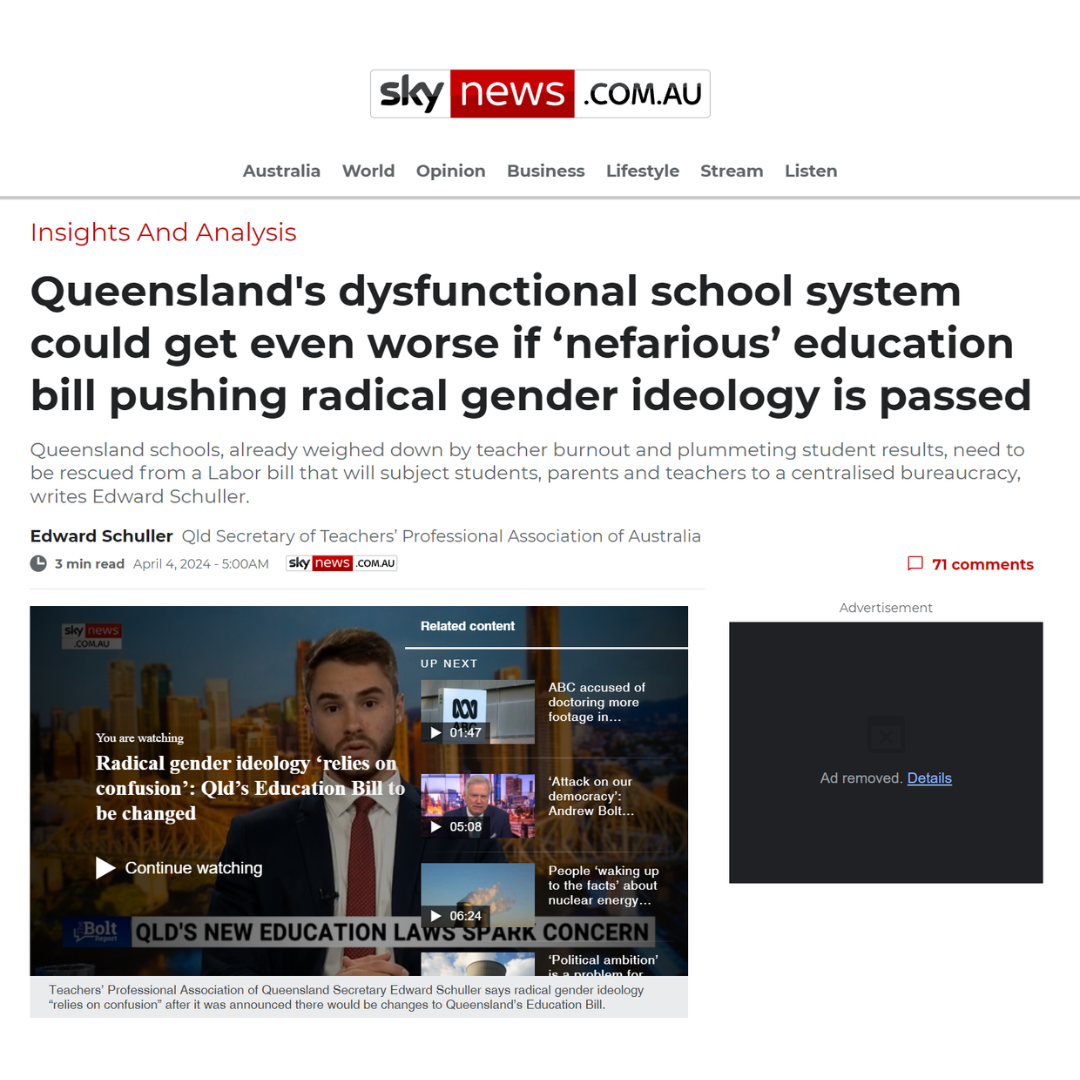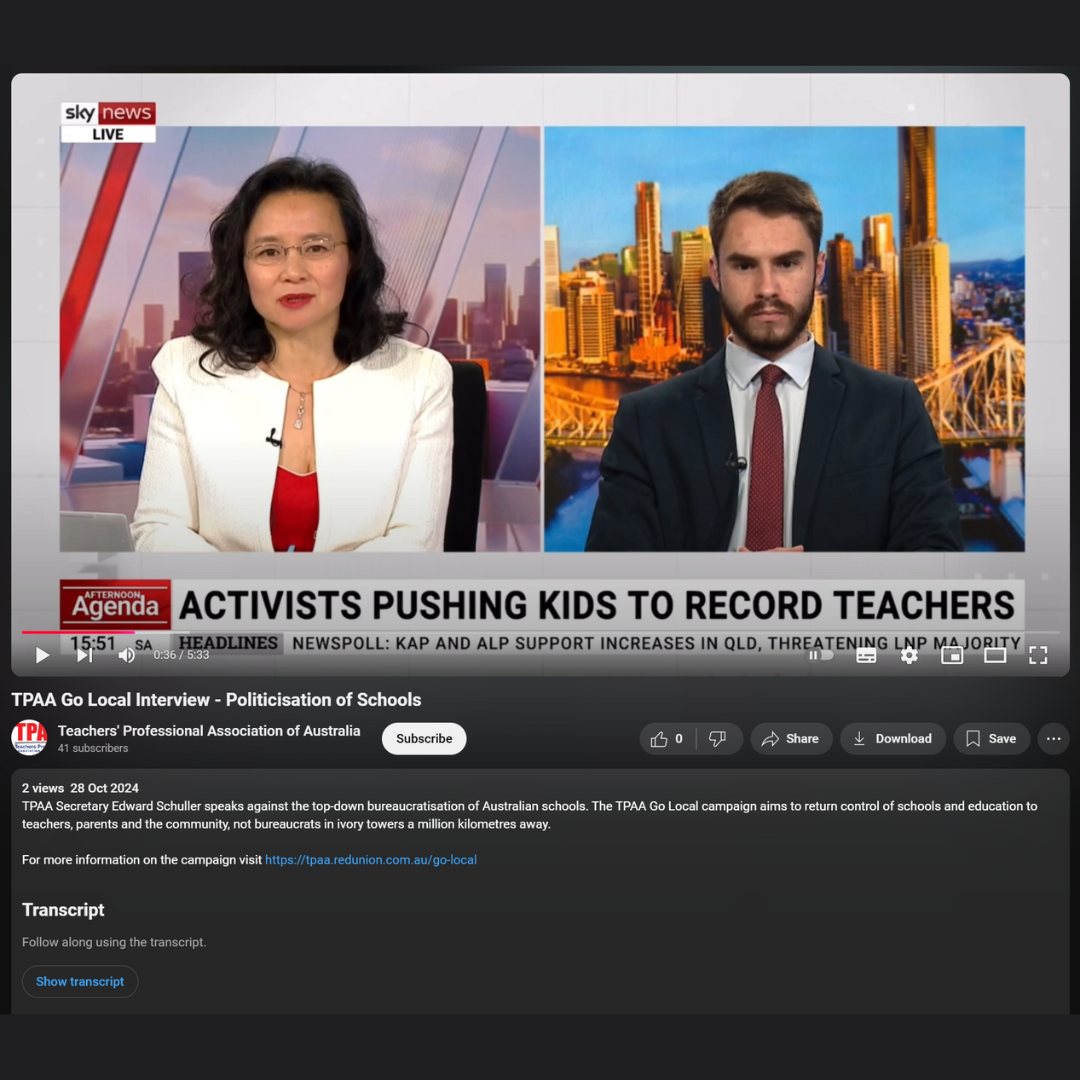Media Mentions
to contact the executive directly email:
hotline@tpaa.asn.au - ATTN: TPAA Secretary
Media Mention Links
-
TV Appearances:
Politicisation of Schools - sky news - 25/10/24
Changes to Queensland’s Education Bill all about ‘centralised power’ - Sky News - 02/04/24
Interview with ADH TV - Education System - The Other Side - 08/12/23
Student Behaviour - Sunrise - 13/11/23
-
Articles:
‘Ideological’ inclusion policies are driving teachers from the profession - education hq - 20/08/24
QLD education bill set to worsen dysfunctional school system - sky news - 04/04/24
Unions' 'indoctrination' of students has failed millions of young Australians - here's how we can fix our broken centralised school system - sky news - 07/12/23
The rot of bureaucracy: it’s time to ‘go local’ on education - the spectator - 19/10/23
Based on analysis by TPAA, a shift to put teachers in charge of schools can create savings that can be reinvested in higher pay for teachers.
In Australia there are more than 4 administrators for every 10 teachers. In France and most of Europe, there is 1 administrator for every 10 teachers.
All references and detailed calculations can be found at the bottom of the page. In summary, by reducing the administrator to teacher ratio from 1:10 across all jurisdictions, there will be a saving of:
- QLD: $1,478,931,892 per year
- NSW: $2,237,191,005 per year
- ACT: $131,064,775 per year
- NT: $111,308,976 per year
- SA: $745,136,768 per year
- VIC: $3,059,610,396 per year
- TAS: $205,739,830 per year
- WA: $1,337,126,446 per year
If these savings were passed on to teachers in the form of a pay rise, the government can afford to pay teachers on average 28% more without increasing the budget.
Sign the Petition:
Australia's education system, much like the country's broader approach to centralisation, is failing—not just for teachers in terms of professional fulfilment and remuneration but also for students and their families.
The system, which once began with simple locally-run, autonomous schools, has evolved into a gargantuan structure that serves the interests of a tribal network of politicians, bureaucrats, and unions rather than focusing on the needs of students, teachers or our communities. The decision about who teaches and what is being taught to their children is denied parents and in the main denied teachers as well. Unless parents withdraw their children from public schools and pay extra to send them to private schools then they have no effective say in their children's education.

Here is the TPAA solution
We say fully empowered School boards, elected by parents, will bring focus, transparency and accountability that public service bureaucracies can never achieve. More importantly, every teacher can be paid at least 28% more from day one from the savings generated by letting the school principal and the local board decide what staff are necessary and hire and fire them from the school itself.
They can also determine the curriculae, disciplinary policy and who can and can't attend. Let us see the end of departmental bureaucratic ideologues bullying our teachers and forcing the indoctrination of our children.
Such a simple change will guarantee the deliverables that parents want for their children and the professional recognition and remuneration teachers deserve in the workplace.
Step one; How the funding works is crucial. Here is how the parents choose what is taught to their own child.
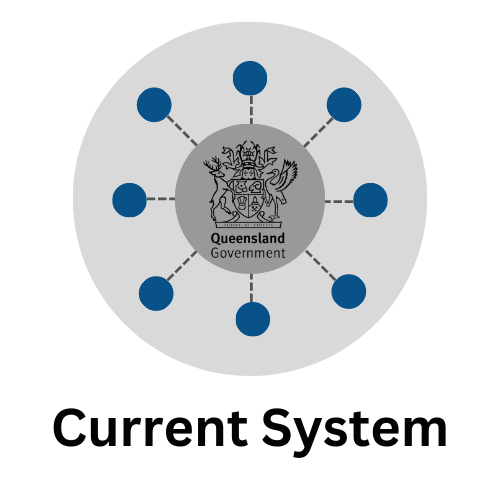
Let’s make our local schools autonomous, with an elected school boards, run by parents.
While anyone, including teachers, can be elected, the power remains with the parents. This places parents in charge of school policy, not teachers. In such a system, teachers would naturally have far more influence over policy decisions than they do now, as parents are more likely to listen to their insights compared to distant bureaucrats.
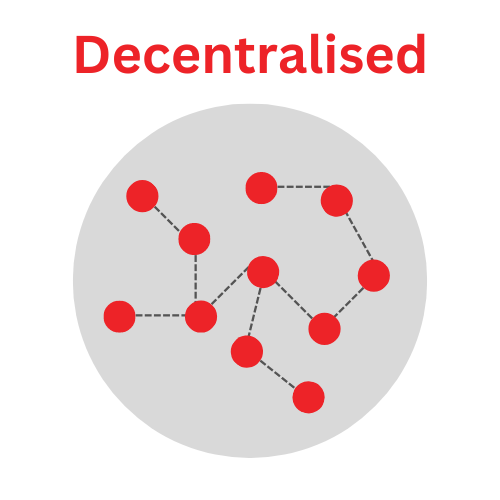
Step one:
How the funding works is crucial. Here is how the parents choose what is taught to their own child:
Part 1: A School Elected Board
Let’s make our local schools autonomous, with school boards, elected by parents not appointed by politicians or bureaucrats.
While anyone, including teachers, can be elected, the power remains indirectly with the parents. However, in such a system, teachers would naturally have far more influence over policy decisions than they do now, as parents are more likely to listen to their commonsense insights compared to distant bureaucrats. The real power for parents to determine what is taught to their own children is that like Medicare instead of the government funding going directly to the bureaucratic supplier, the government funding goes to the user, the student in this case via a voucher.
This voucher is then cashed by the school that the parent has decided to send their student to. So each parent individually decides where the money goes and what their child is taught by virtue of having the power to move their child and the associated tuition fees to the school of the parent's choice.

Part 2: Empowering Teachers in School Decision-Making
Teachers at the schools would be able to have a much greater level of input into effective policy than under the current system where centralised edicts from bureaucrat often stifle education outcomes.
Schools that wished to succeed would use traditional private sector mechanisms which would allow the school to dramatically reduce the cost of administration which means there will be a minimum extra available to increase teacher pay by 28% plus much more left over. The TPAA is for teachers not bureaucrats. TPAA would make sure that was the end result on pay.

Step TWO:
Pay Teachers 28% more
The current unbelievable ratio of teachers to bureaucrats at about 2-3 for every bureaucrat is counterproductive. In a locally autonomous school environment, barely one administrator for every ten teachers will be needed. The savings from the retrenchment of 80-90% of these bureaucratic parasites will more than fund a 28% pay rise with more than that left over to improve school facilities as well. In fact it is a condition of TPAA teacher support for these reforms that they get this pay rise.
Step THREE:
Let us honour our teachers and abandon the vast majority of teacher university training qualifications. Yes, teachers need a vocational training qualification such as a relevant degree or diploma so that they have a sufficient knowledge base in what they are teaching, but as for learning how to teach, which is more art than science, they should be assessed under an "apprenticeship style" system where they learn the skills and be assessed by their peers whilst on the job.
Promotion should be based mainly on meritorious performance, not academic qualifications.
If you want to help us deliver local teacher-run schools for your communities - Sign the Petition
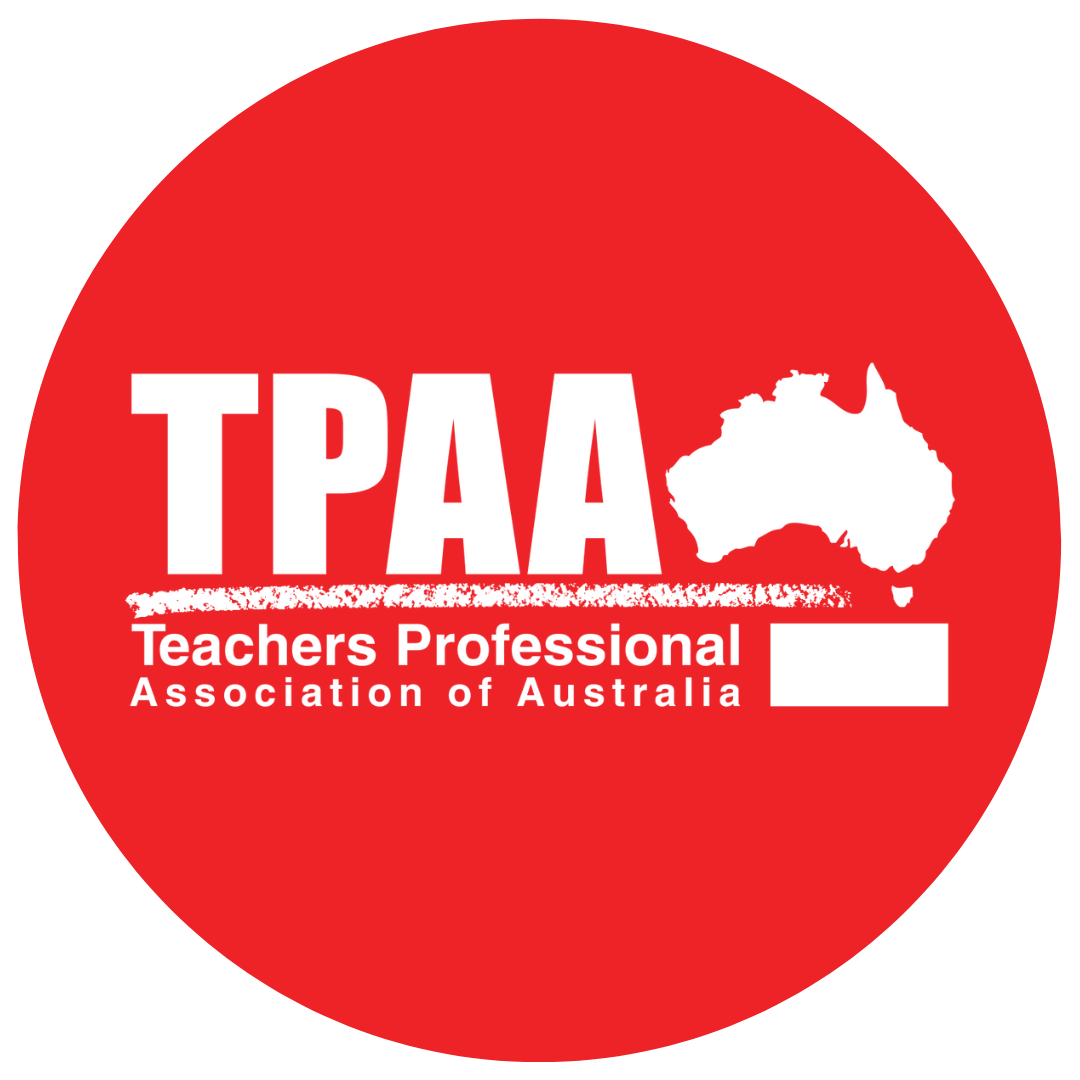
Introductory Letter to the Green Paper
11 June 2024
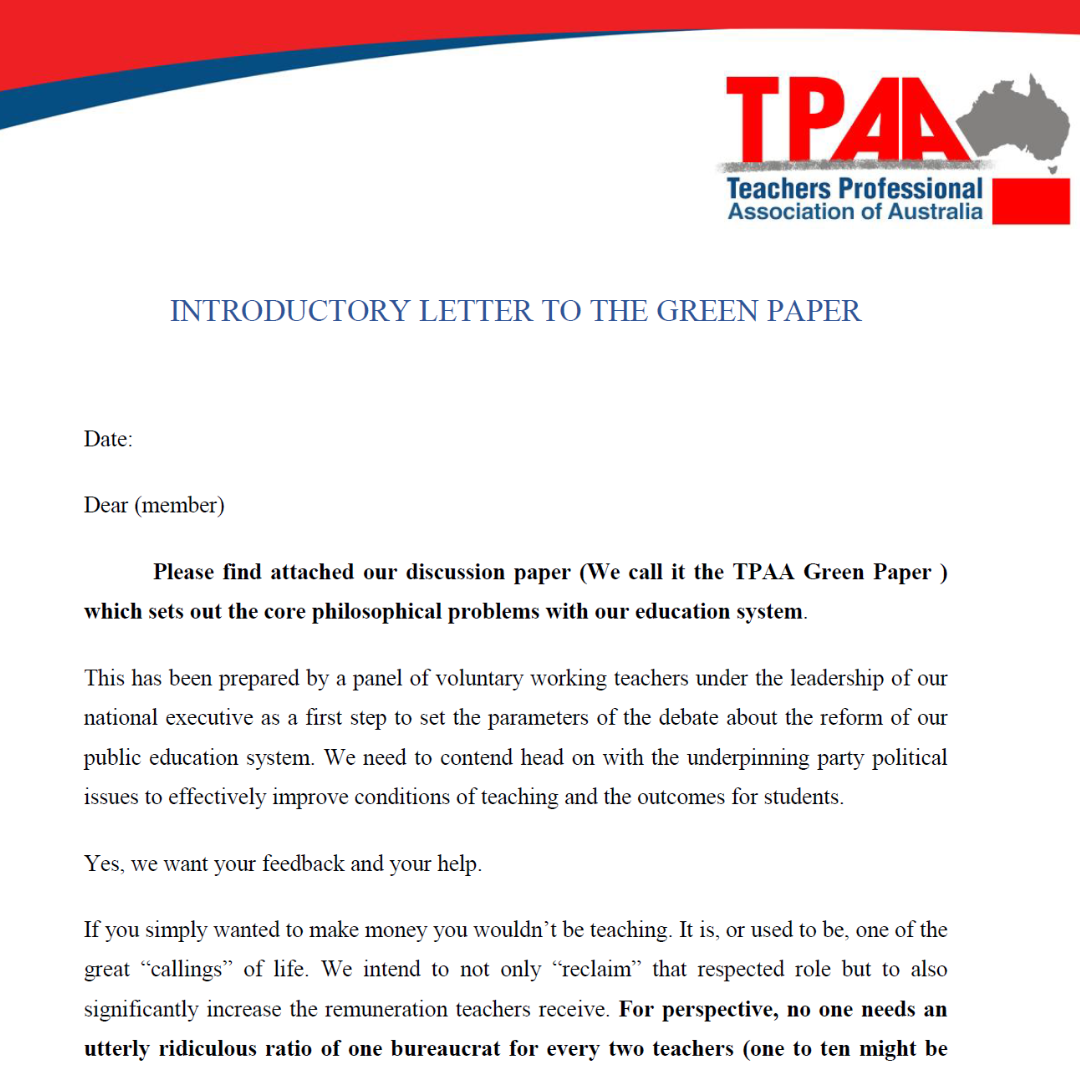
TPAQ Media Release on QLD Education Bill 2024
16th April 2024 - Media Release
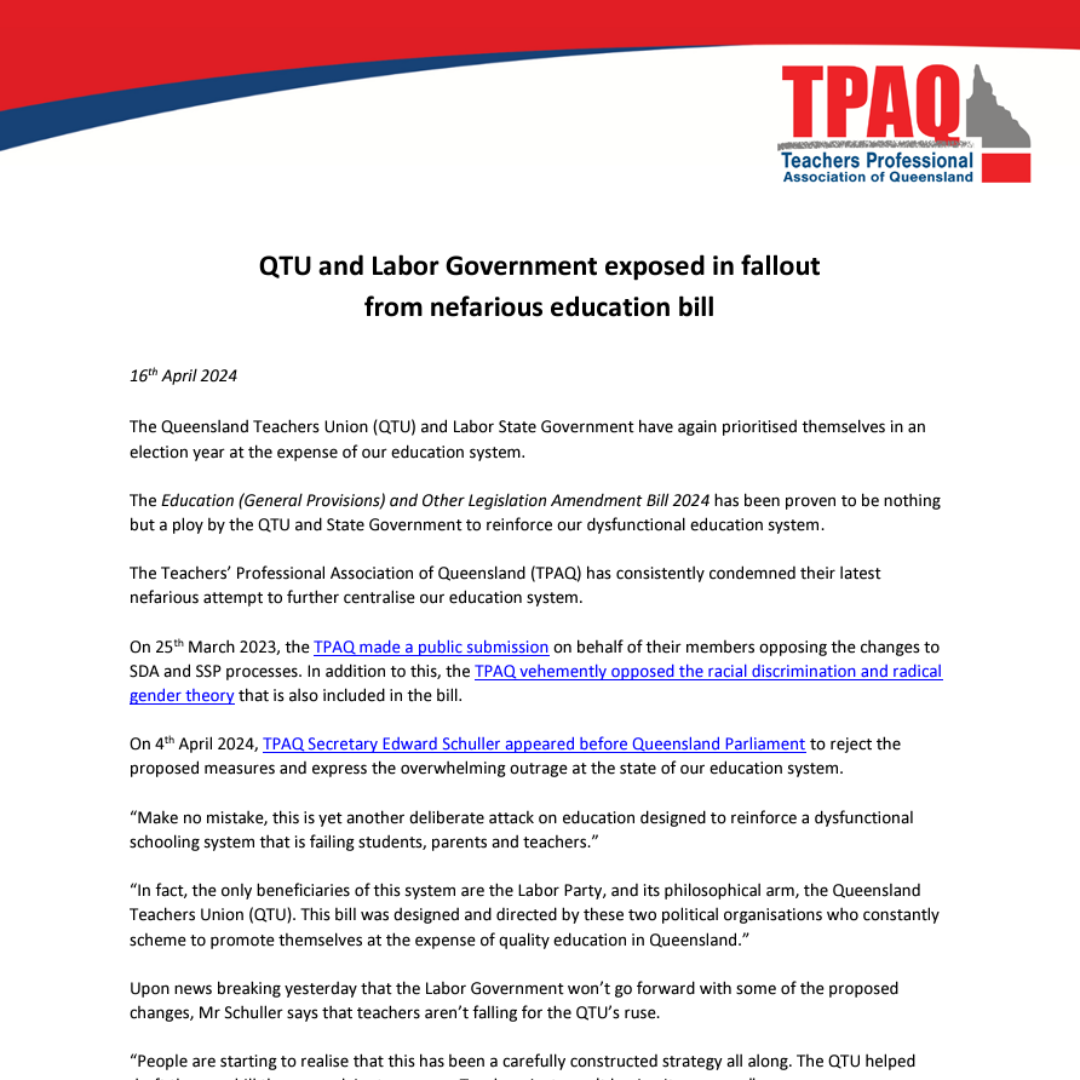
TPAQ Parliamentary Submission on Education (GP) Bill 2024
Submission to the Education, Employment, Training and Skills Committee
25 March 2024
%20Bill%202024.png)
Calculations & References
Click to expand the state:
-
Australian Capital Territory (ACT):
-
Current system: For every 10 teachers, there are 3.74 administrators.
-
Go Local system: By reducing to 1 administrator per 10 teachers, Australian Capital Territory would have a reduction of 1,574 administrative positions, potentially saving $131,064,775
-
This could result in an average pay increase of $22,787 per teacher per year.
References
Teachers:
https://www.acara.edu.au/reporting/national-report-on-schooling-in-australia/staff-numbersAdministration:
https://www.acara.edu.au/reporting/national-report-on-schooling-in-australia/staff-numbers -
-
New South Wales (NSW):
-
Current system: For every 10 teachers, there are 3.60 administrators.
-
Go Local system: By reducing to 1 administrator per 10 teachers, NSW would have a reduction of 24,7889 administrative positions, potentially saving $2,237,191,005.
-
This could result in an average pay increase of $23,448 per teacher per year.
References
Teachers:
https://www.acara.edu.au/reporting/national-report-on-schooling-in-australia/staff-numbersAdministration:
https://www.acara.edu.au/reporting/national-report-on-schooling-in-australia/staff-numbers -
-
Northern Territory (NT):
-
Current system: For every 10 teachers, there are 3.86 administrators.
-
Go Local system: By reducing to 1 administrator per 10 teachers, the Northern Territory would have a reduction of 1003 administrative positions, potentially saving $111,308,976.
-
This could result in an average pay increase of $31,743 per teacher per year.
References
Teachers:
https://www.acara.edu.au/reporting/national-report-on-schooling-in-australia/staff-numbersAdministration:
https://www.acara.edu.au/reporting/national-report-on-schooling-in-australia/staff-numbers -
-
Queensland (QLD):
-
Current system: For every 10 teachers, there are 3.93 administrators.
-
Go Local system: By reducing to 1 administrator per 10 teachers, Queensland would have a reduction of 19,610 administrative positions, potentially saving $1,478,931,892.
-
This could result in an average pay increase of $22,083 per teacher per year.
References
Teachers:
https://www.acara.edu.au/reporting/national-report-on-schooling-in-australia/staff-numbersAdministration:
Appendix I. p.50
https://www.acara.edu.au/reporting/national-report-on-schooling-in-australia/staff-numbers -
-
South Australia (SA):
-
Current system: For every 10 teachers, there are 4.72 administrators.
-
Go Local system: By reducing to 1 administrator per 10 teachers, South Australia would have a reduction of 8,005 administrative positions, potentially saving $$745,136,768.
-
This could result in an average pay increase of $34,644 per teacher per year.
References
Teachers:
https://www.acara.edu.au/reporting/national-report-on-schooling-in-australia/staff-numbersAdministration:
https://www.acara.edu.au/reporting/national-report-on-schooling-in-australia/staff-numbers -
-
Tasmania (TAS):
-
Current system: For every 10 teachers, there are 5.13 administrators.
-
Go Local system: By reducing to 1 administrator per 10 teachers, Tasmania would have a reduction of 2,766 administrative positions, potentially saving $205,739,830.
-
This could result in an average pay increase of $30,748 per teacher per year.
References
Teachers:
https://www.acara.edu.au/reporting/national-report-on-schooling-in-australia/staff-numbersAdministration:
https://www.acara.edu.au/reporting/national-report-on-schooling-in-australia/staff-numbers
https://web.archive.org/web/20231104235237/https://publicdocumentcentre.education.tas.gov.au/library/Shared%20Documents/Salary-Scales.pdf -
-
Victoria (VIC):
-
Current system: For every 10 teachers, there are 4.47 administrators.
-
Go Local system: By reducing to 1 administrator per 10 teachers, Victoria would have a reduction of 30,281 administrative positions, potentially saving $3,059,610,396.
-
This could result in an average pay increase of $35,101 per teacher per year.
References
Teachers:
https://www.acara.edu.au/reporting/national-report-on-schooling-in-australia/staff-numbersAdministration:
https://www.acara.edu.au/reporting/national-report-on-schooling-in-australia/staff-numbers -
-
Western Australia (WA):
-
Current system: For every 10 teachers, there are 5.7 administrators.
-
Go Local system: By reducing to 1 administrator per 10 teachers, Western Australia would have a reduction of 15,595 administrative positions, potentially saving $1,337,126,446.
-
This could result in an average pay increase of $40,070 per teacher per year.
References
Teachers:
https://downloads.wairc.wa.gov.au/agreements/sch012.pdfAdministration:
Table 13, 16
https://downloads.wairc.wa.gov.au/agreements/sch012.pdf -
-
Total Impact:
-
By implementing the Go Local system with a teacher-to-administrator ratio of 1:10 across all states and territories, Australia would have a reduction of 103,623 administrative positions and of around $9,306,110,089 in administrative salaries.
-
If the saved funds were redistributed to teachers, it would result in an average pay increase of $29,561 (28.4%) per teacher per year, based on the total FTE teacher count (as at 2024) of 320,377 across all states and territories.
Note:
-
Calculations only consider administrative staff, as opposed to all non-teaching staff.
-
The calculations are based on the median savings and average pay increases derived from the provided data. Actual figures may vary.
References:
https://www.acara.edu.au/reporting/national-report-on-schooling-in-australia/staff-numbers
-

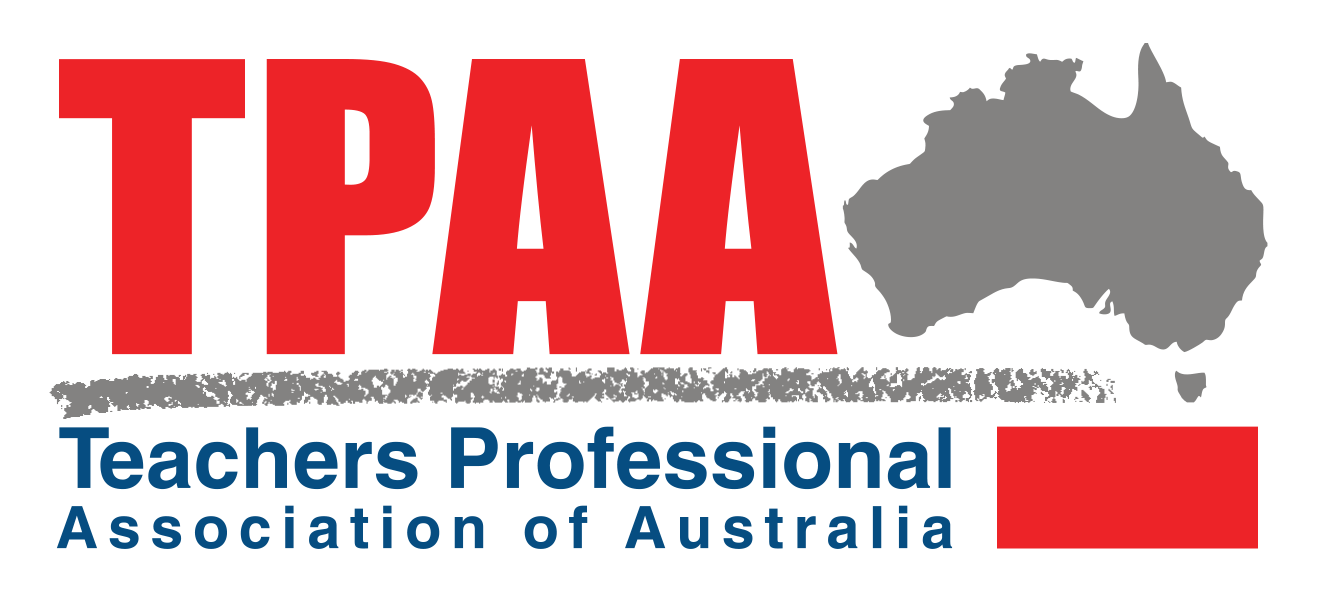

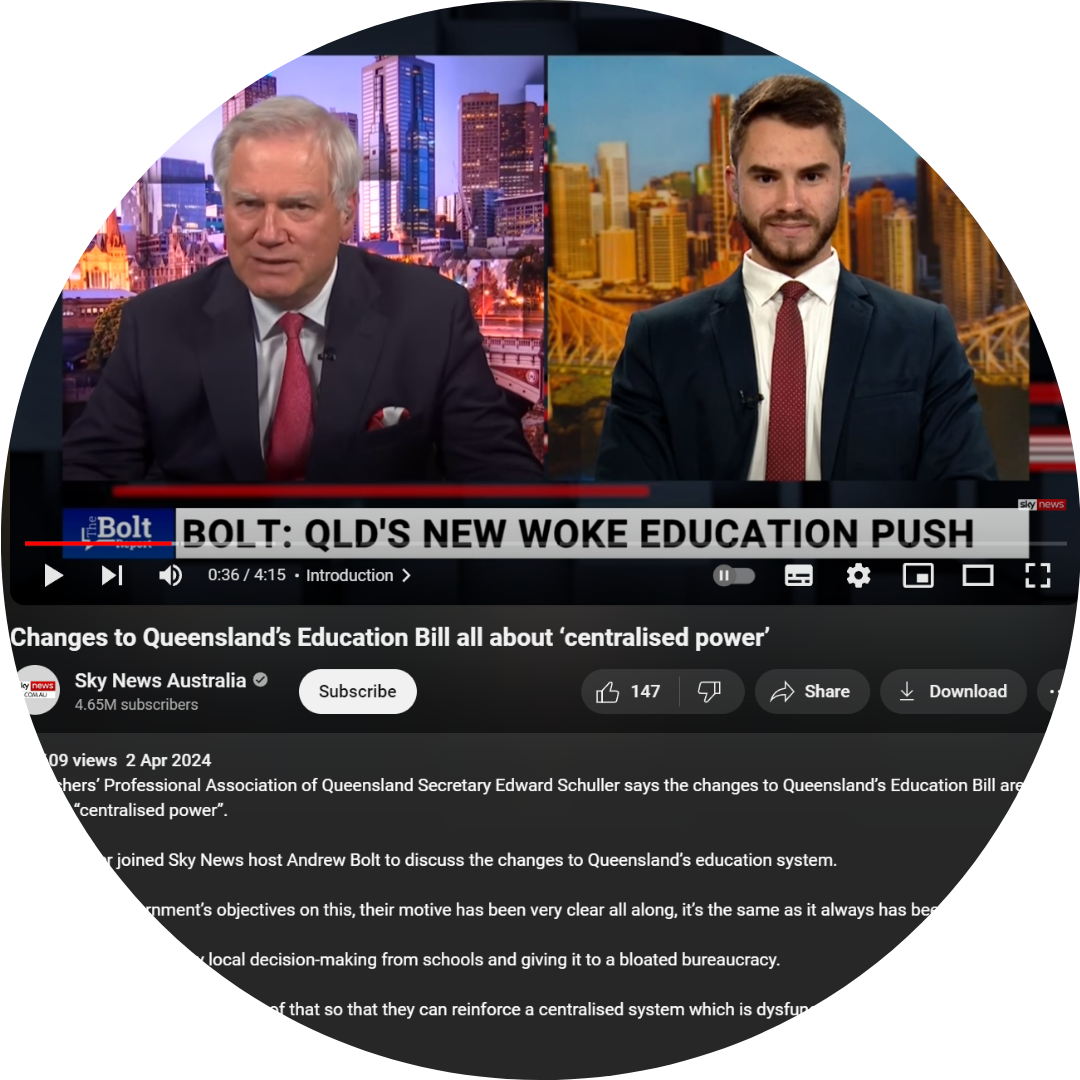
.png)

